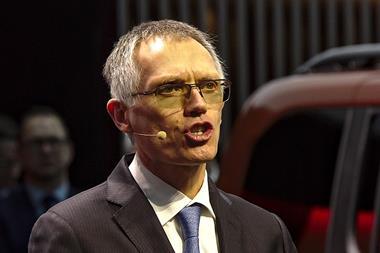Stellantis has partnered with Chinese battery manufacturer CATL to invest up to €4.1 billion ($4.3 bn) for a large-scale lithium iron phosphate (LFP) battery plant in Spain.

Through a 50-50 joint venture, Stellantis and CATL will build the facility at Stellantis’ Zaragoza site. Targeted to start production by the end of 2026, the facility is set to have capacity of up to 50 GWh – although the OEM said this is “subject to the evolution of the electrical market in Europe and continued support from authorities in Spain and the European Union”.
Reducing EV cost pressures: Localising the battery supply chain
The decision is a strategic one by the carmaker, as it diversifies the battery chemistry used for its EVs and helps localise its battery supply chain – both of which will help reduce costs while OEMs grapple with increasing EV cost pressures.
LFP battery chemistry is more commonly used in lower-cost EV models, helping reduce the overall cost of production for EVs. On top of this, localising its battery supply chain by placing the gigafactory at its Zaragoza facility (and close to its other two Spanish facilities in Vigo and Madrid) will further drive down logistics costs. The carmaker could also use the facility to serve its wider supply chain, with access to the nearby port of Barcelona and potential rail links to France and the rest of mainland Europe.
Improving EV demand and supply flexibility: Diversifying battery chemistries
Having more control over its battery supply chain and more diversity in its battery chemistries will also help enable Stellantis to be more proactive in terms of supply and demand planning. The partnership between Stellantis and CATL has been ongoing, with the pair having signed a Memorandum of Understanding (MoU) last year for the supply of LFP battery cells and modules for European-produced EV models. But Stellantis also has roots in Automotive Cells Company (ACC) as a shareholder alongside Mercedes-Benz and TotalEnergies’ subsidiary Saft. ACC had planned to build three gigafactories across France, Germany and Italy, but two of these were halted in June this year in response to various challenges. The original plan was for the ACC gigafactories to use lithium-ion chemistry for battery cells and modules, but ACC said it would weigh up shifting to LFP while halting construction on two of the factories.
Having more control of its battery supply chain falls in line with the OEM’s strategy to take more control over its outbound supply chain. At the start of this year, Maxime Picat, chief purchasing and supply chain officer, Stellantis told Automotive Logistics in an exclusive interview that the carmaker identified that its capacity to react was limited in outbound logistics, and as a result, the OEM has made moves to acquire direct vehicle logistics capacity. Stellantis completed the majority stake acquisition in French vehicle logistics firm 2L Logistics in April, with future plans to seek more control of its outbound logistics.
Boosting sustainability in EV battery production
The Stellantis and CATL joint venture is designed to be completely carbon neutral, according to the two firms, and will be implemented in several phases and investment plans.
“Stellantis is committed to a decarbonised future, embracing all available advanced battery technologies to bring competitive electric vehicle products to our customers,” said John Elkann, chairman, Stellantis. “This important joint venture with our partner CATL will bring innovative battery production to a manufacturing site that is already a leader in clean and renewable energy, helping drive a 360-degree sustainable approach.”
Robin Zeng, Chairman and CEO of CATL added: “The joint venture has taken our cooperation with Stellantis to new heights, and I believe our cutting-edge battery technology and outstanding operation knowhow combined with Stellantis’ decades-long experience in running business locally in Zaragoza will ensure a major success story in the industry. CATL’s goal is to make zero-carbon technology accessible across the globe, and we look forward to cooperating with our partners globally through more innovative cooperation models.”
The joint venture transaction is expected to close in the next year, subject to regulatory conditions.


























![Global[1]](https://d3n5uof8vony13.cloudfront.net/Pictures/web/a/d/s/global1_726550.svgz)












No comments yet